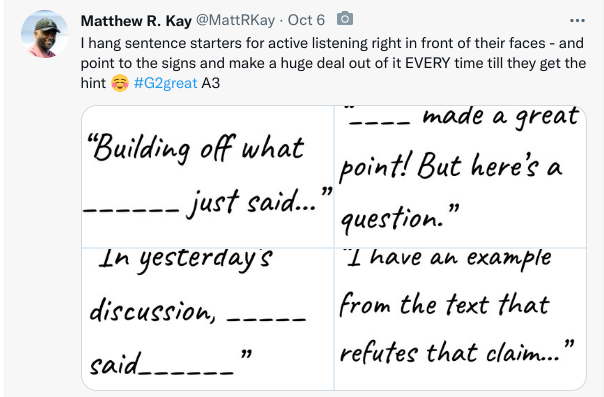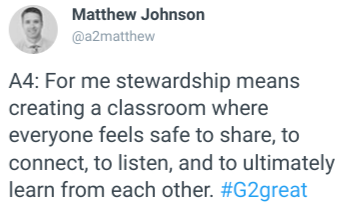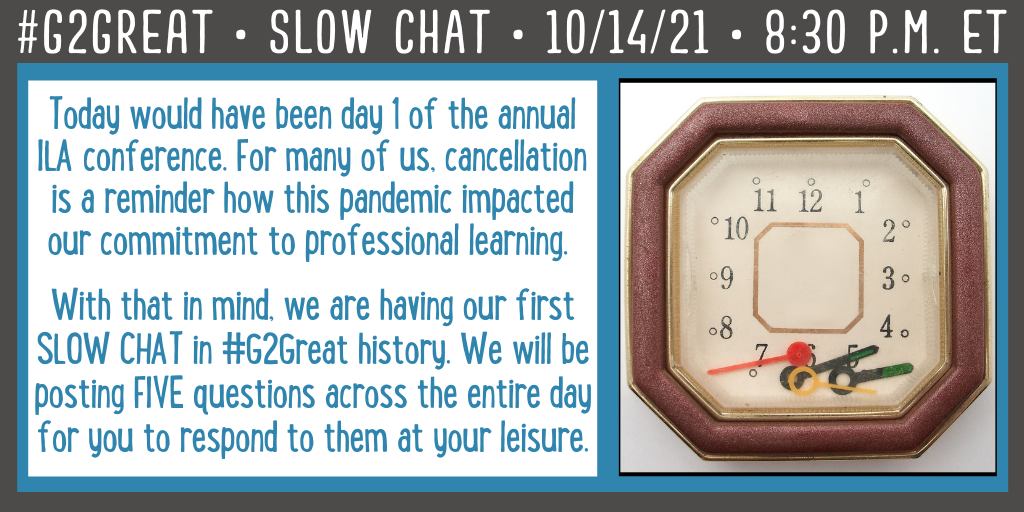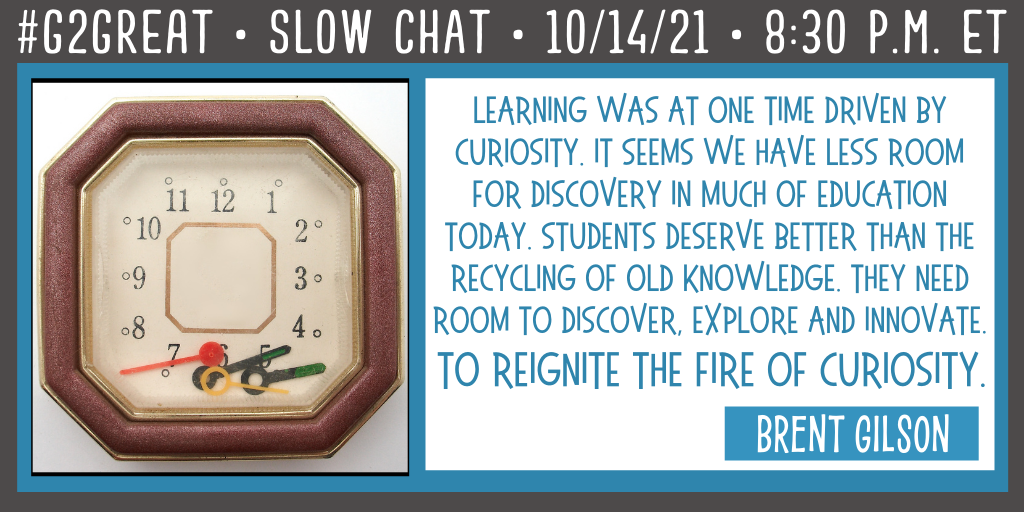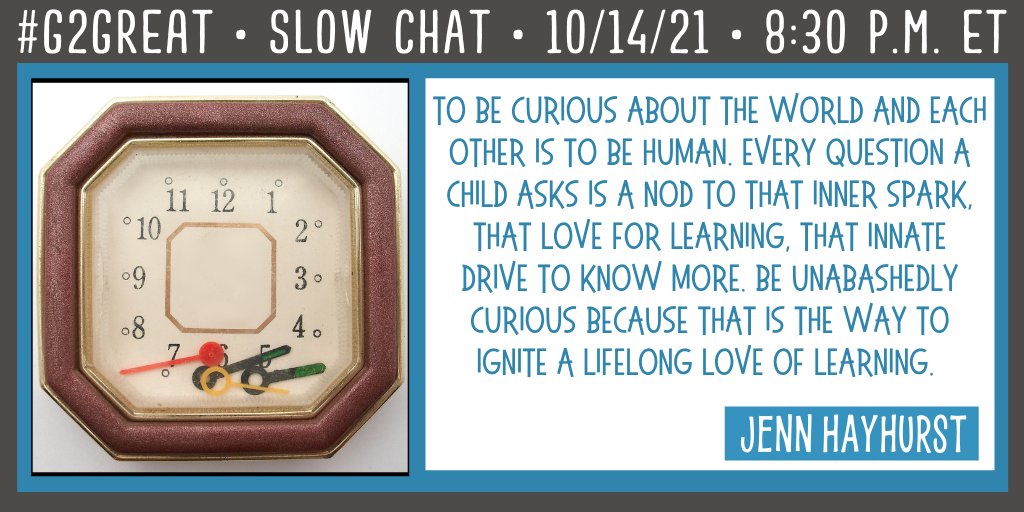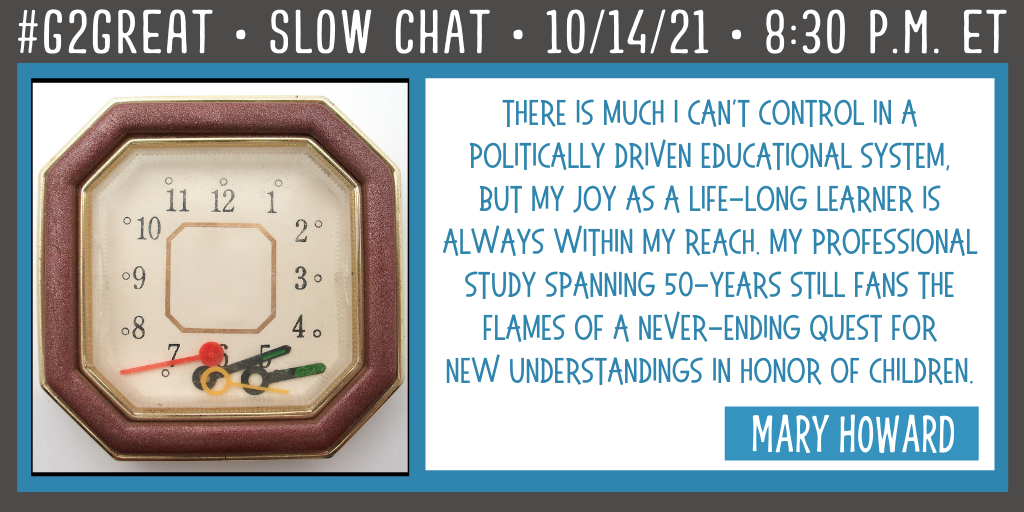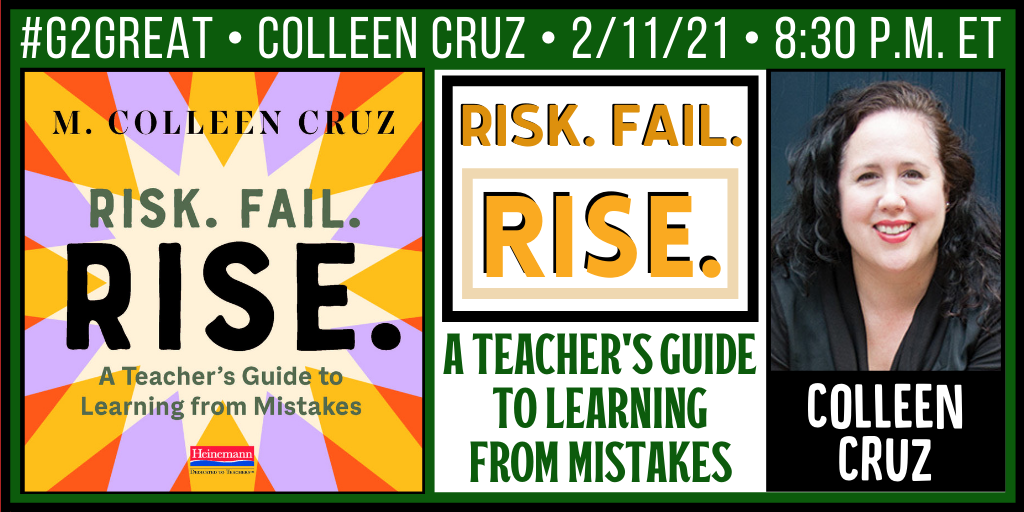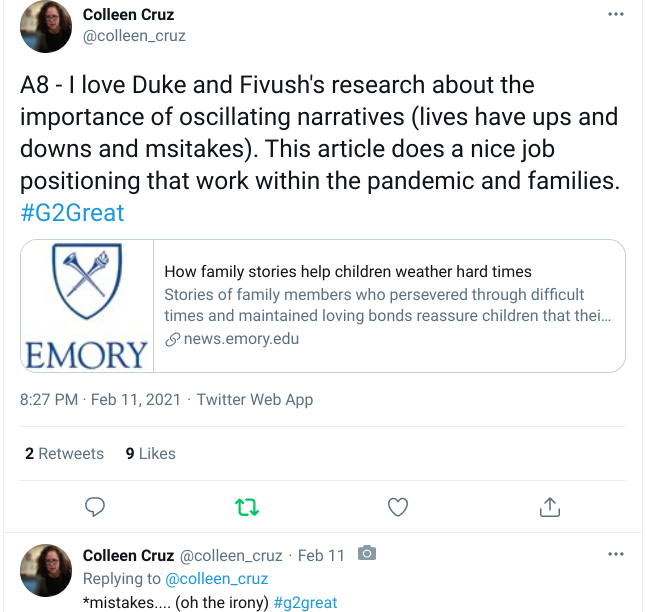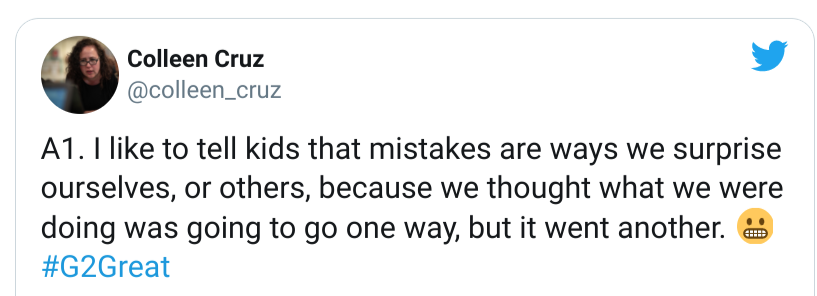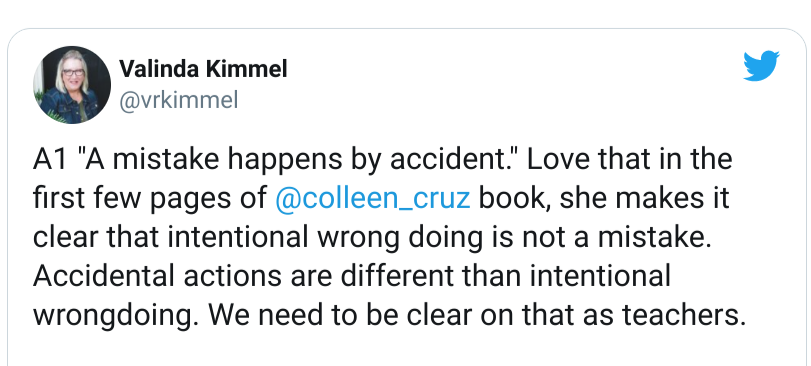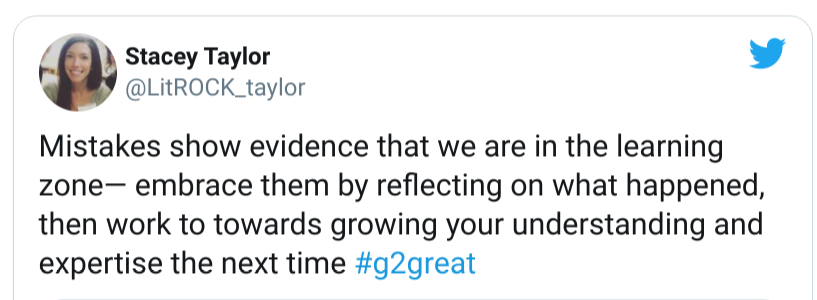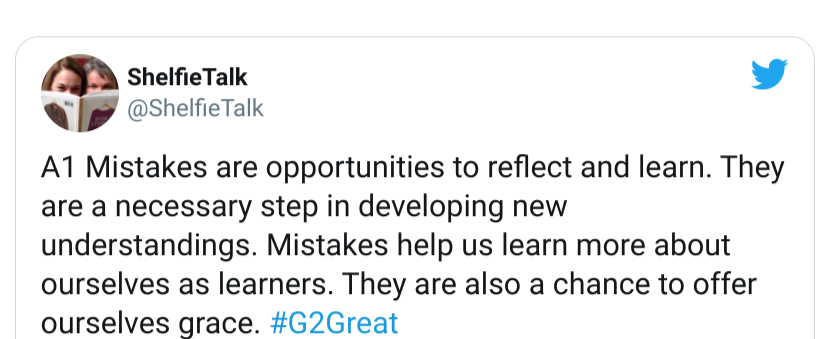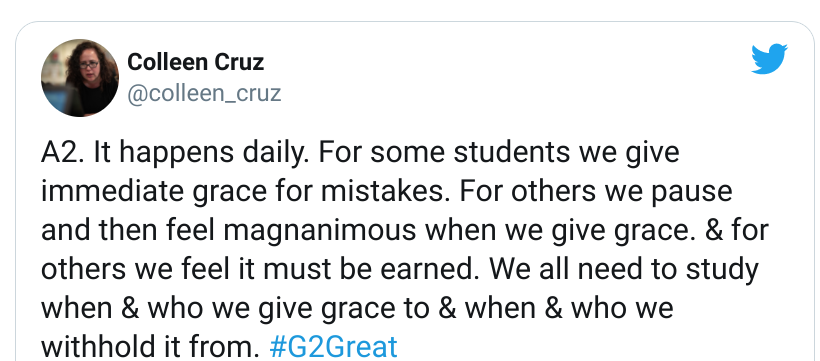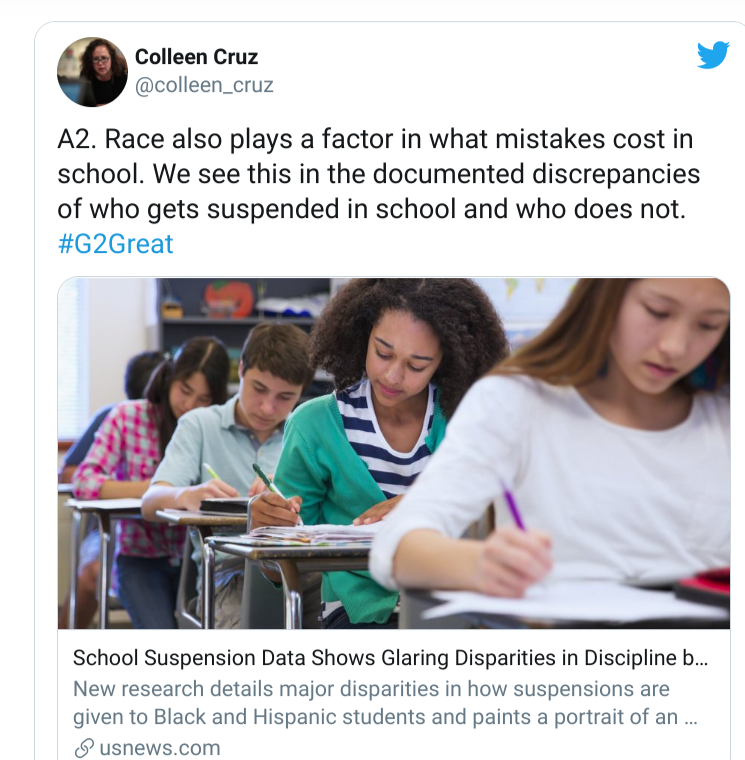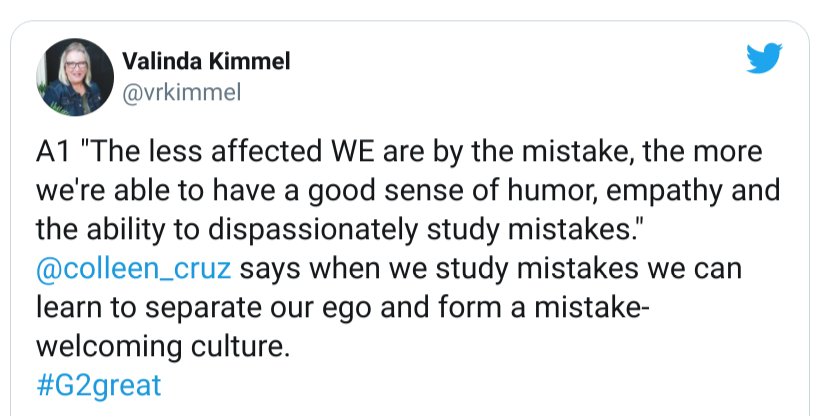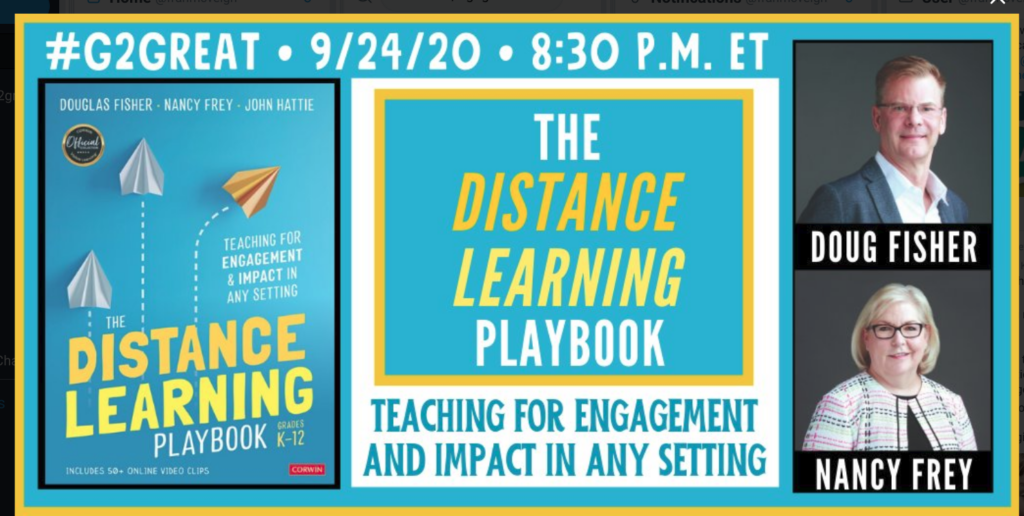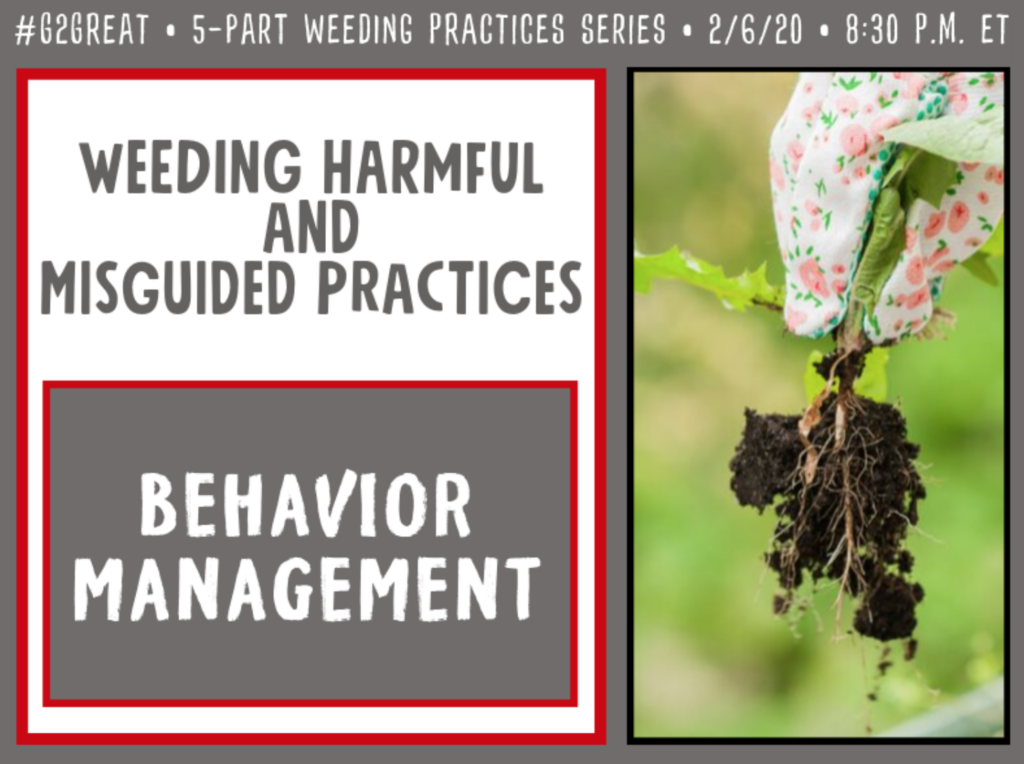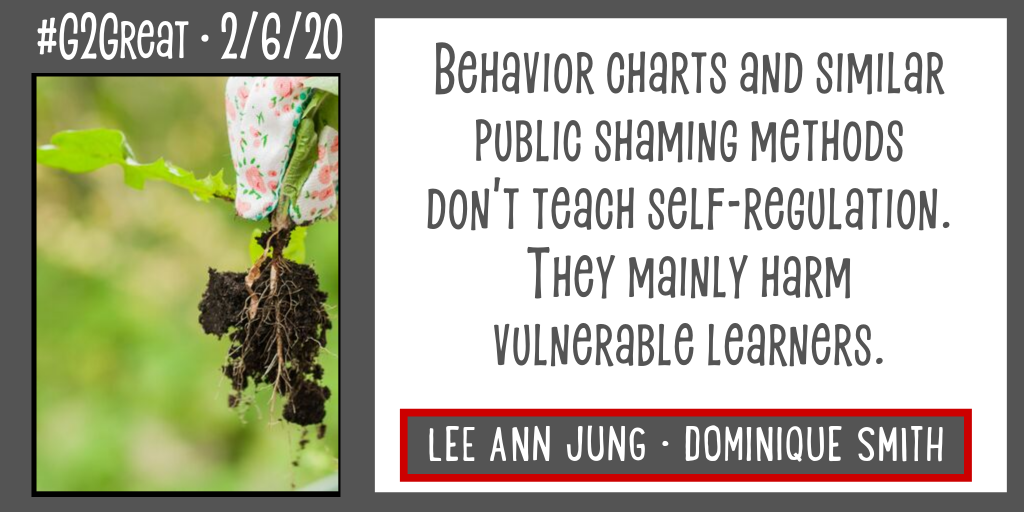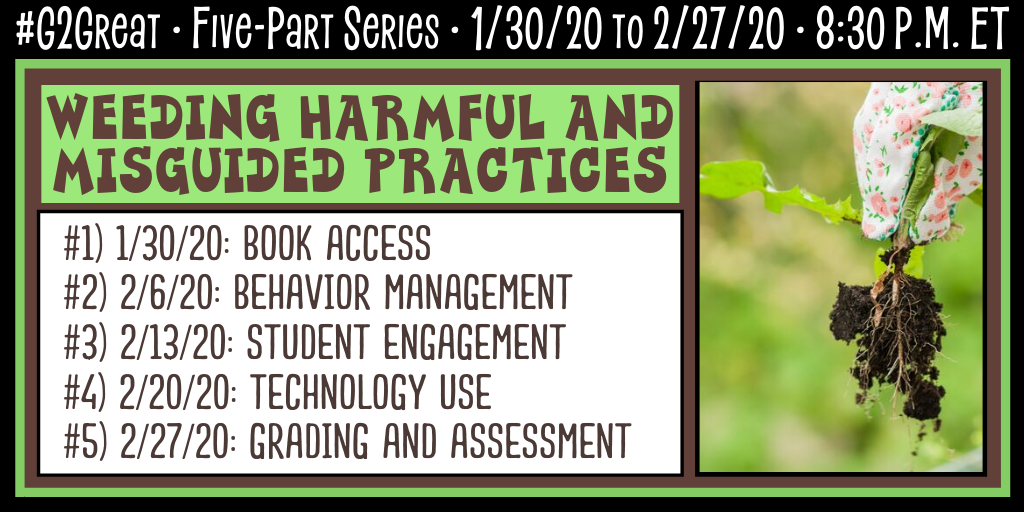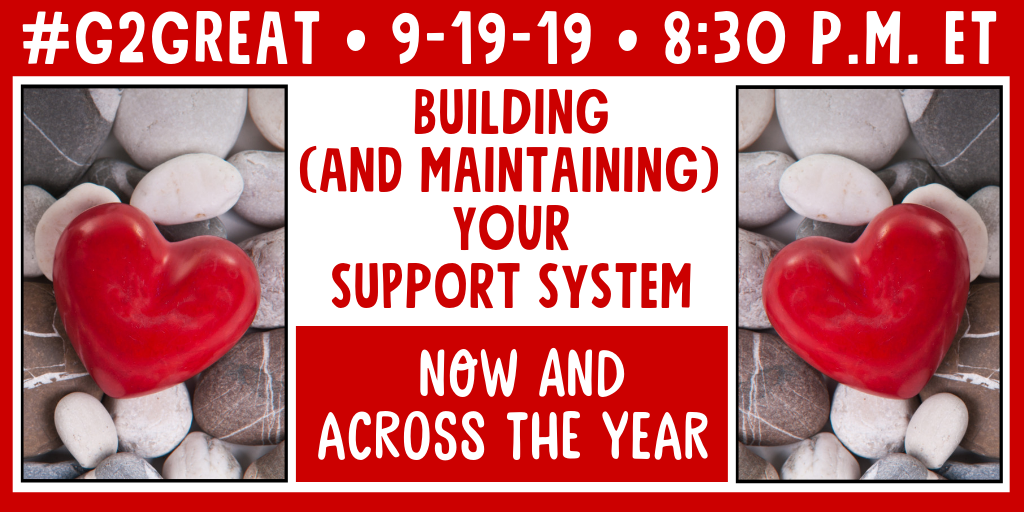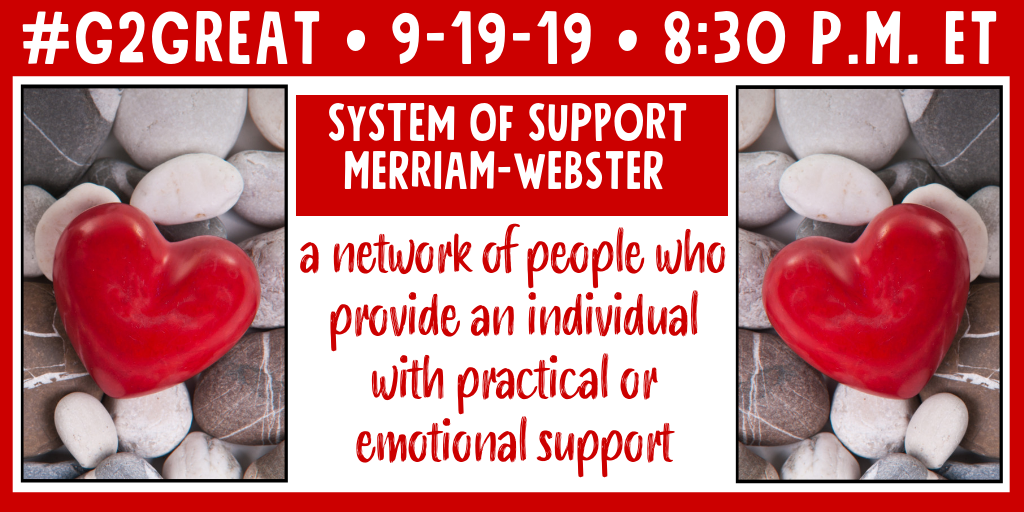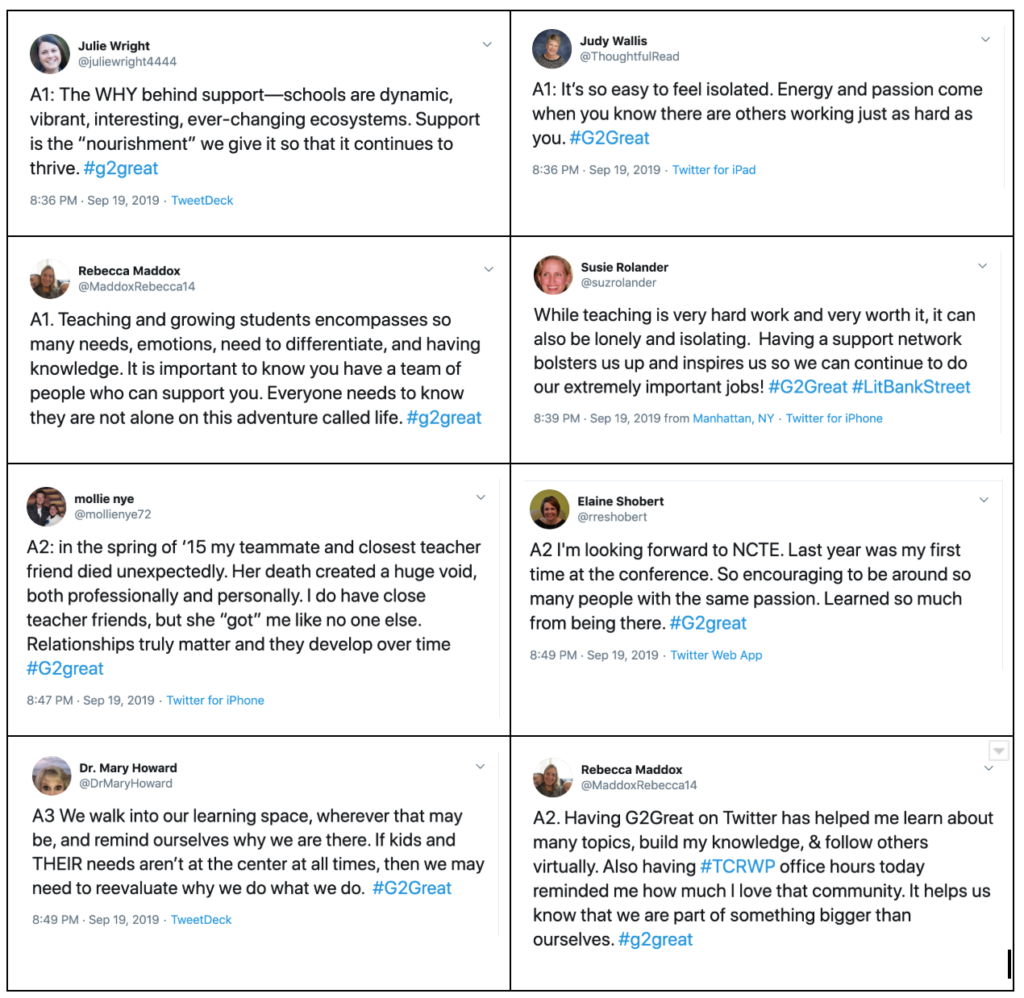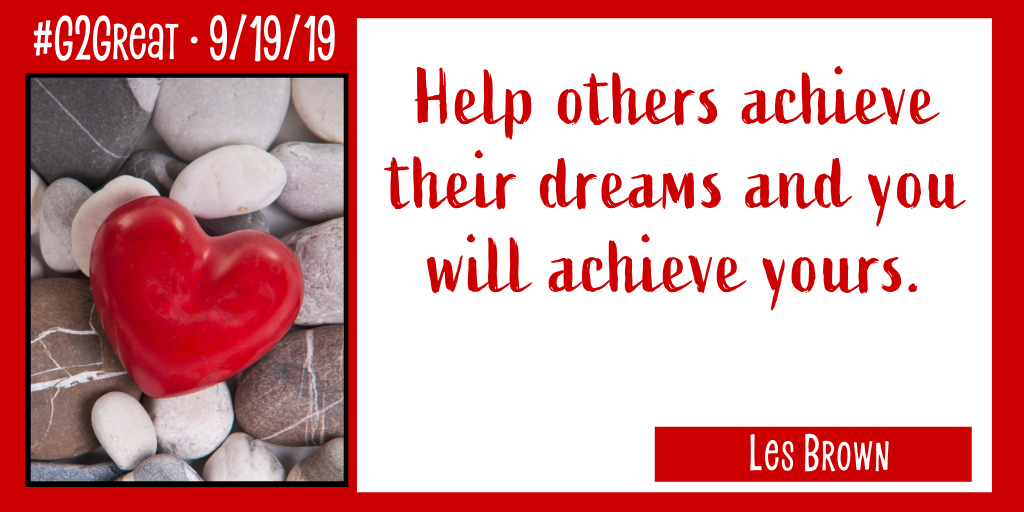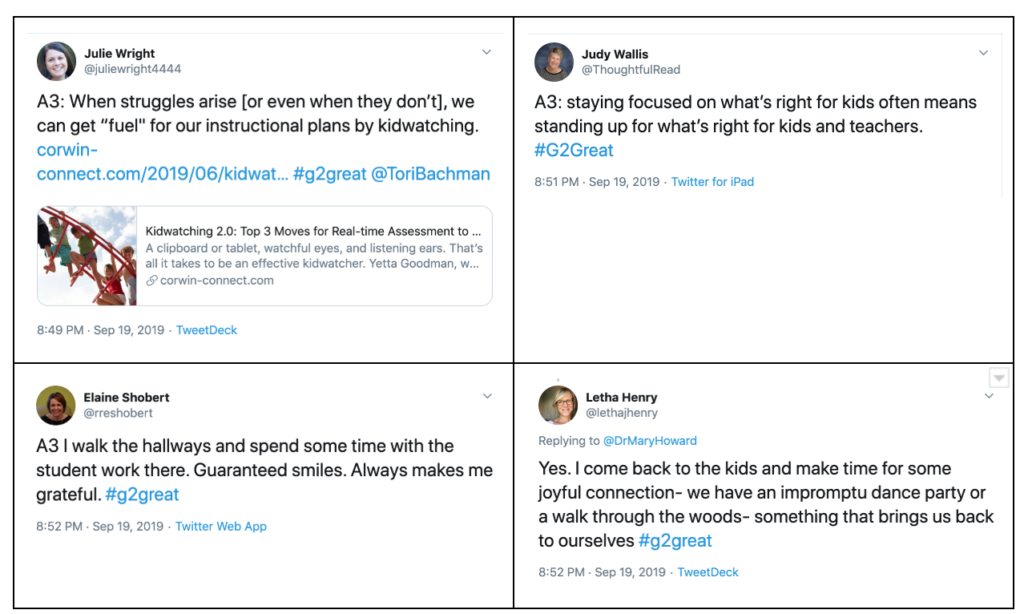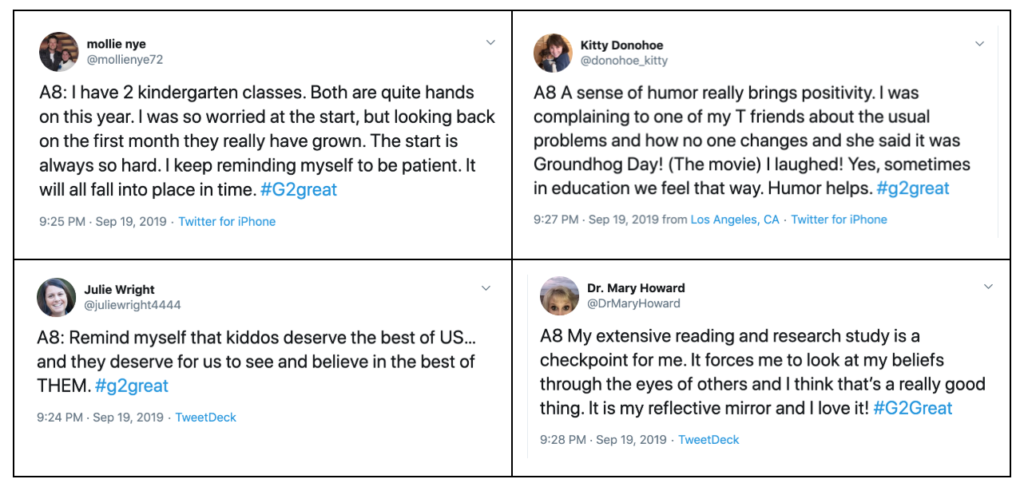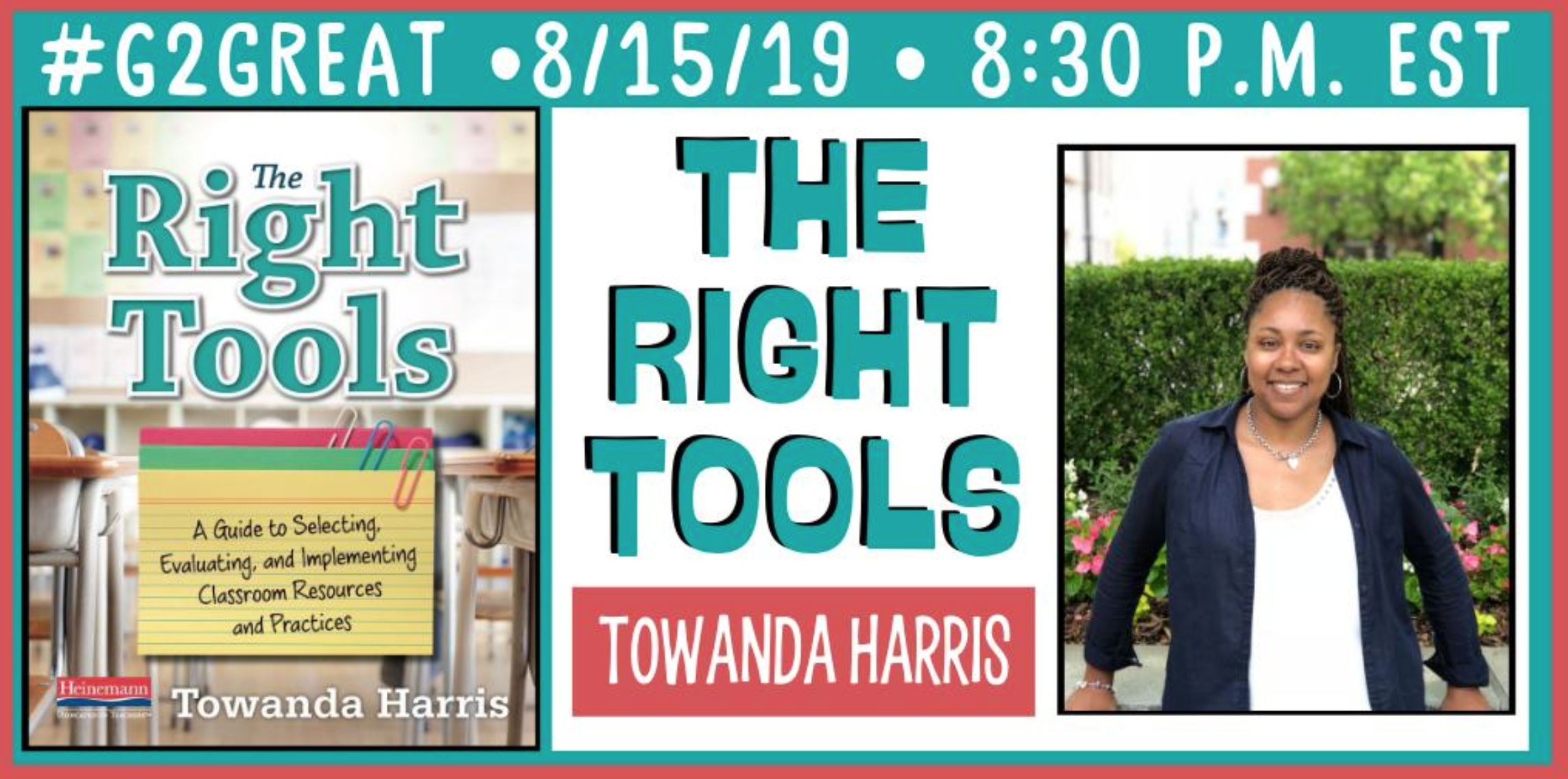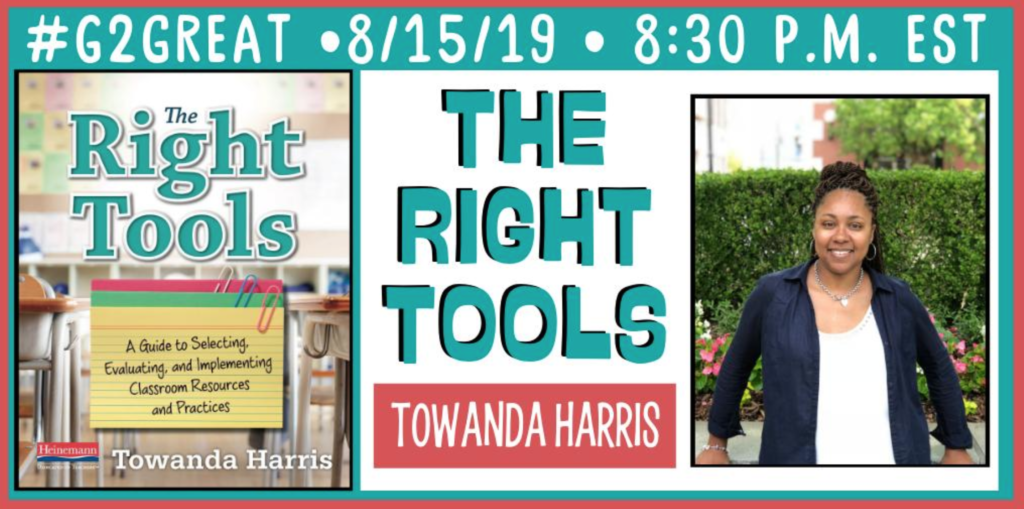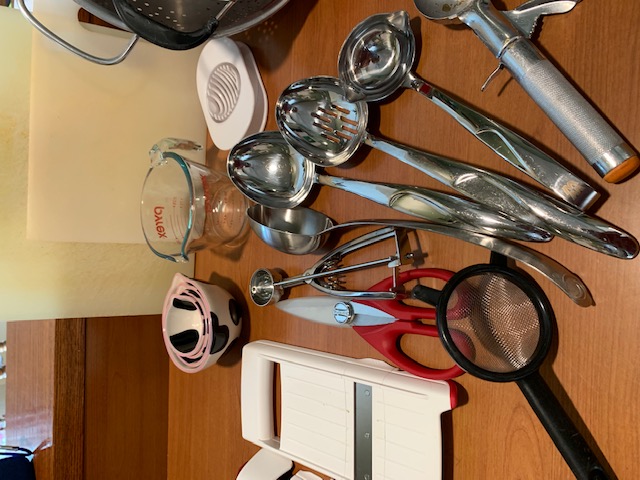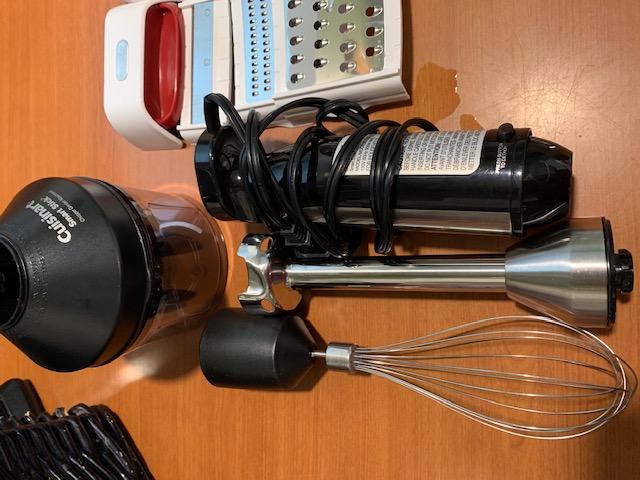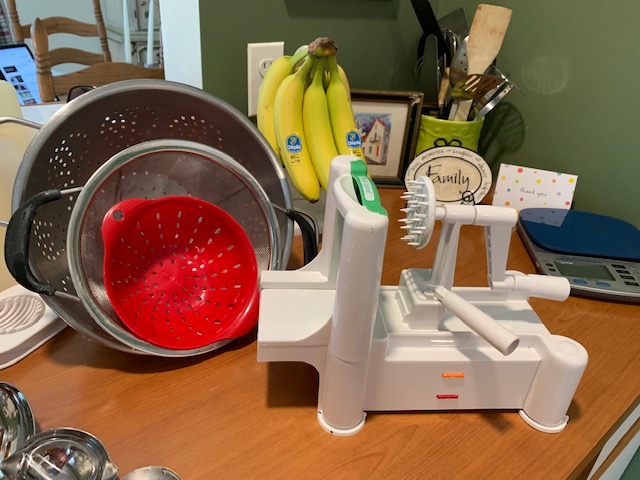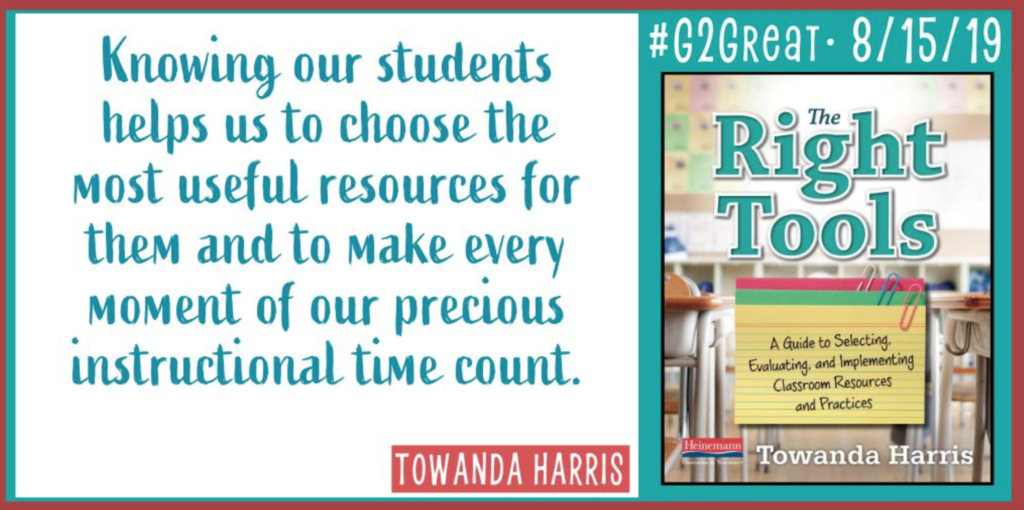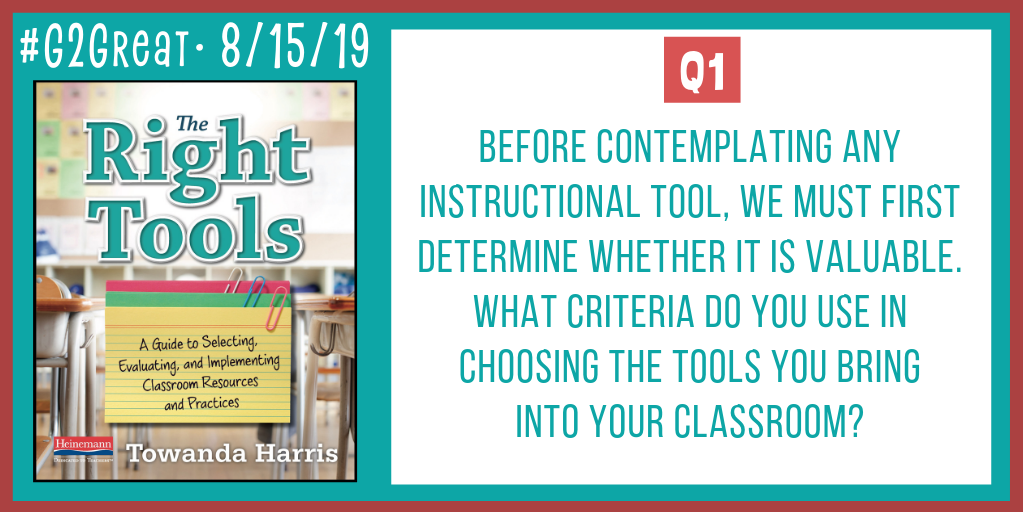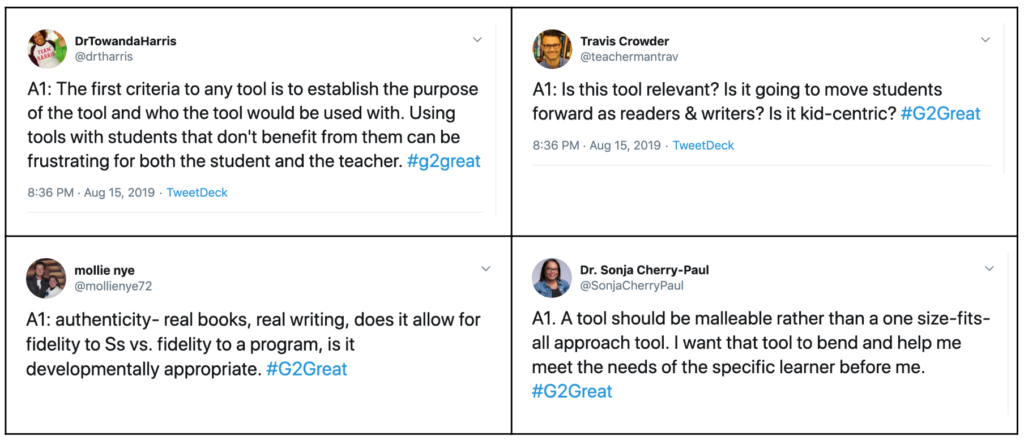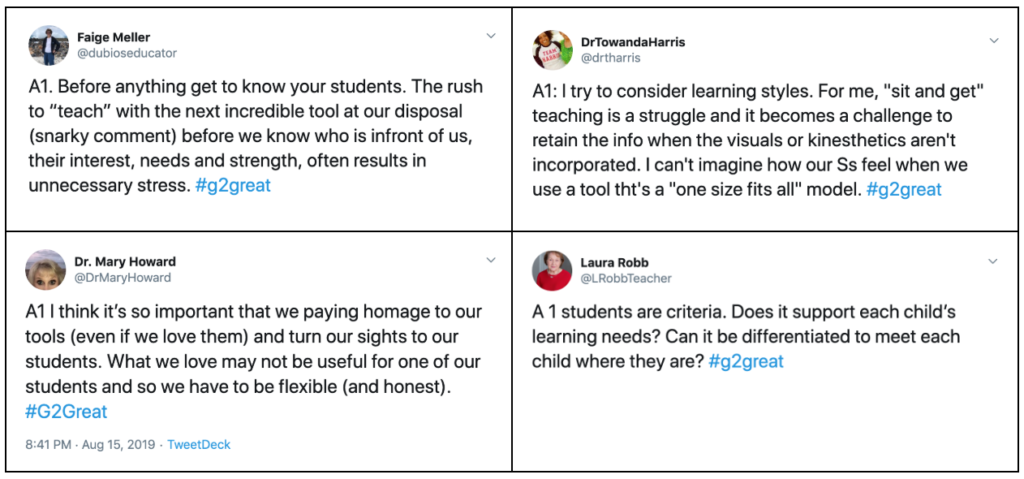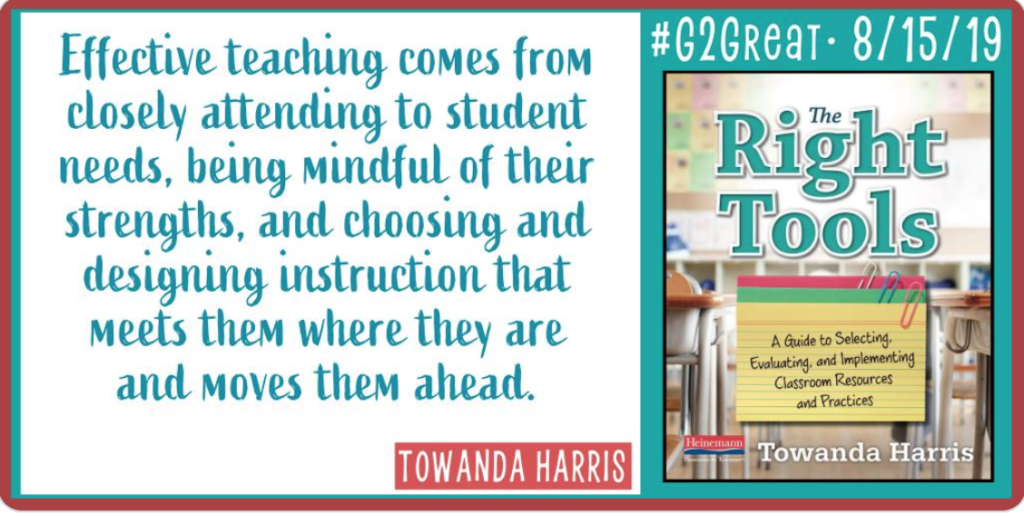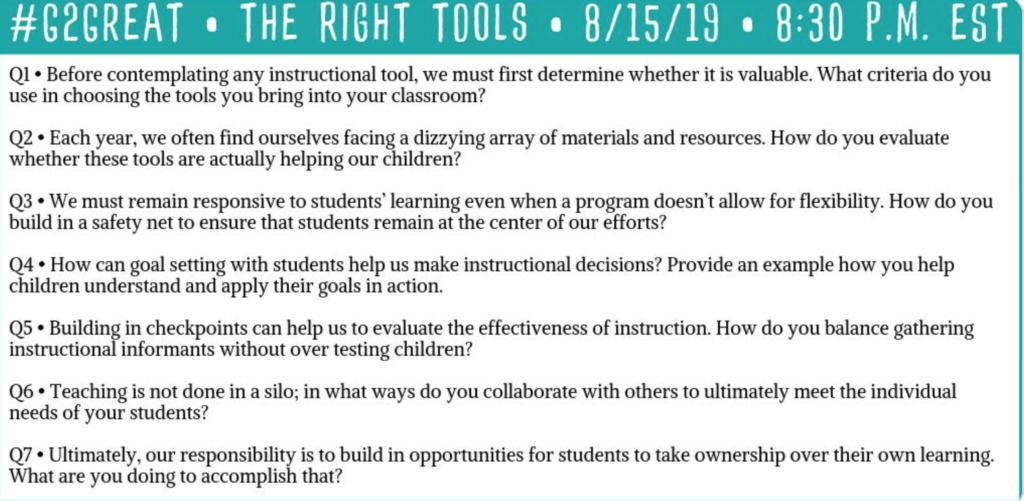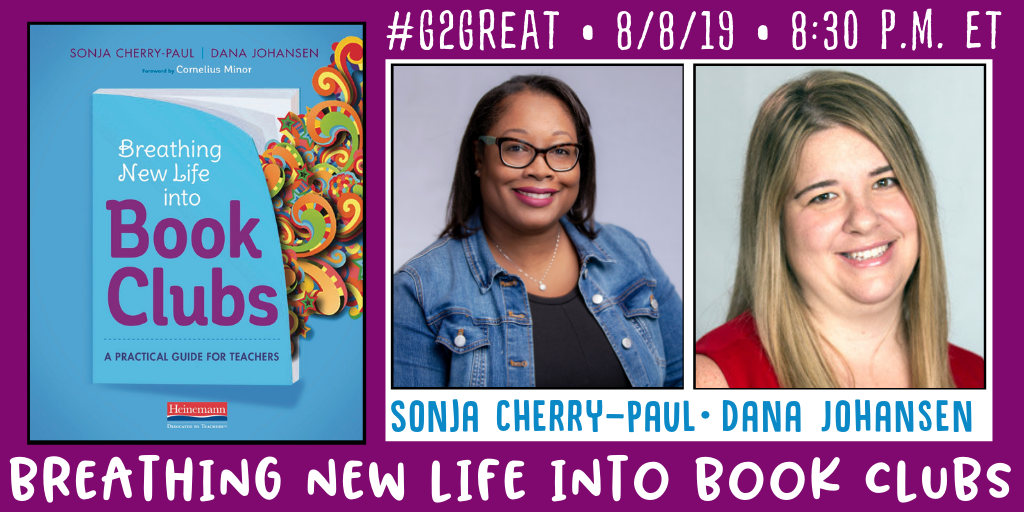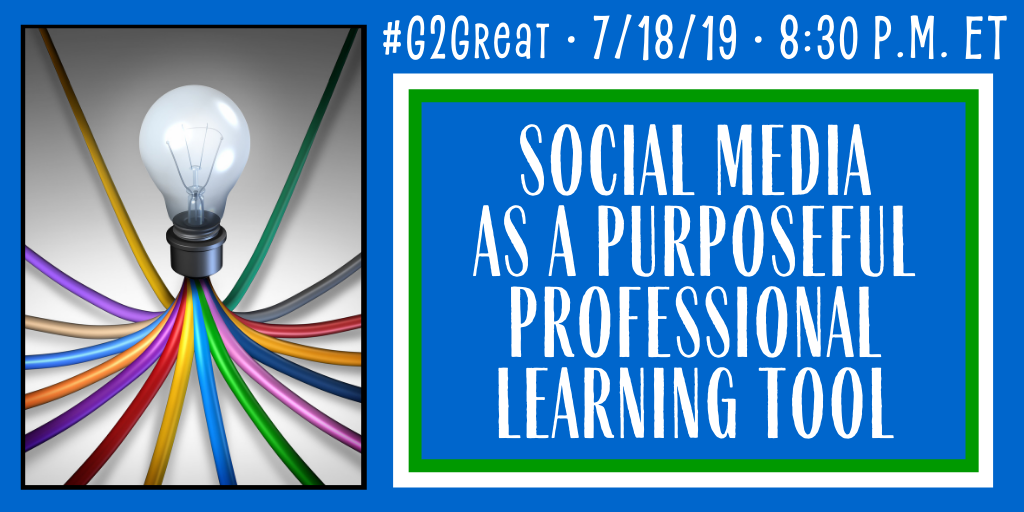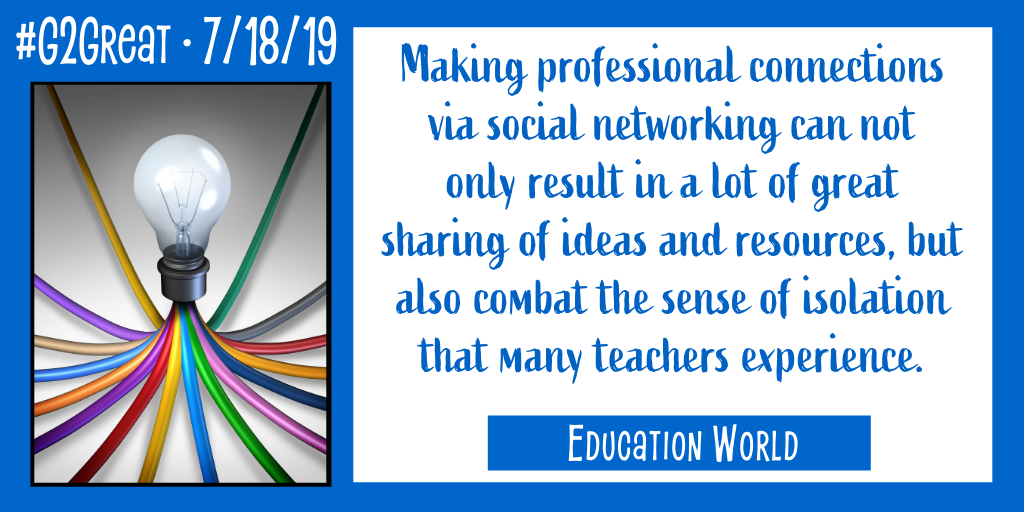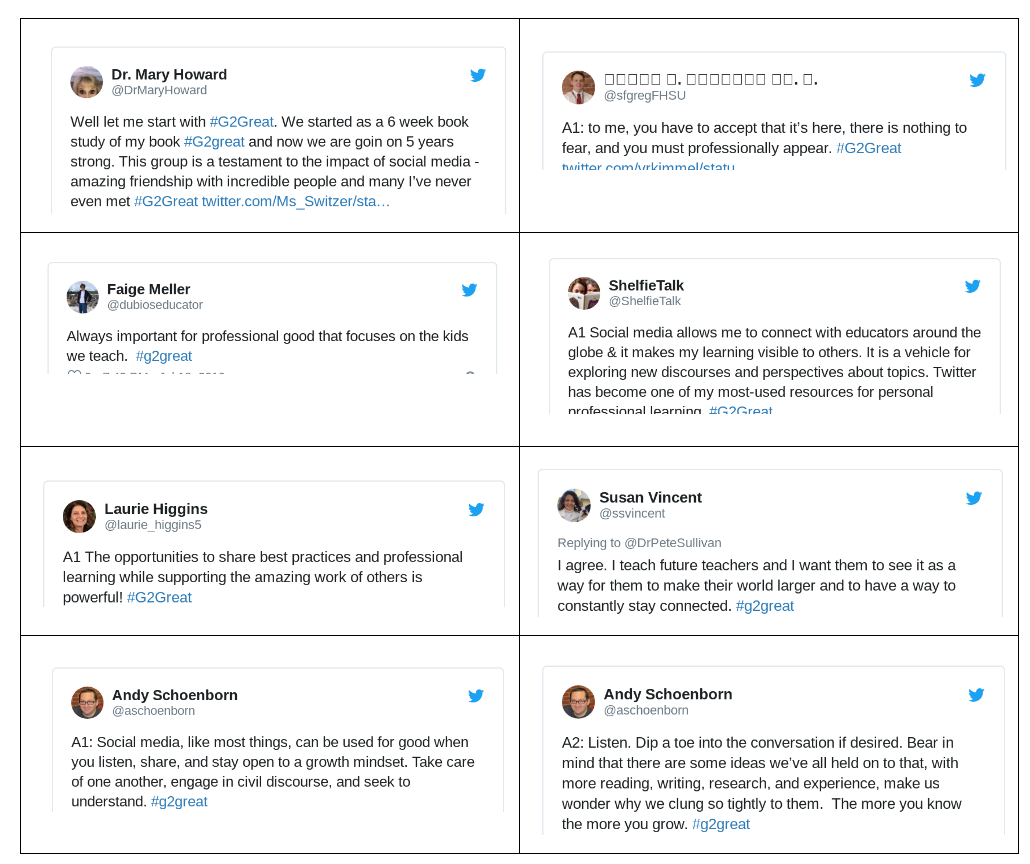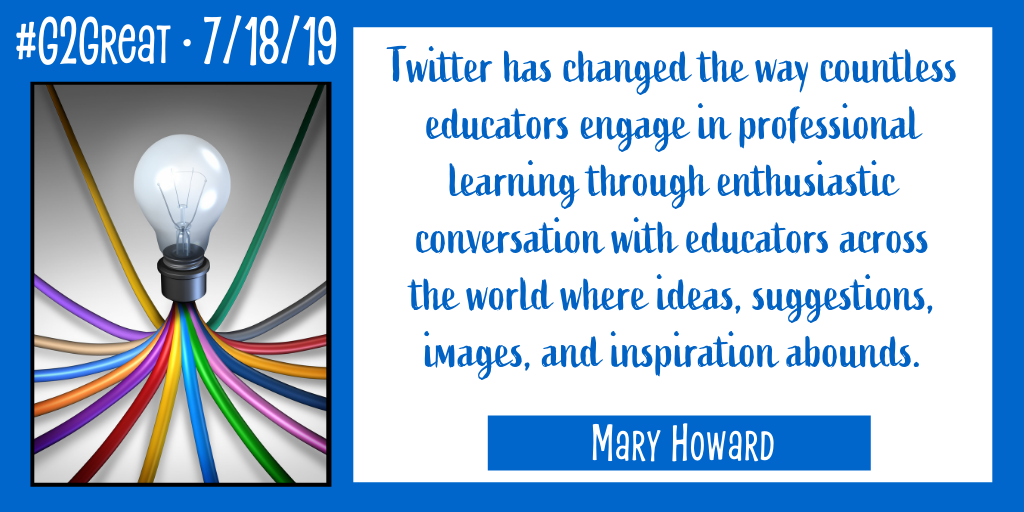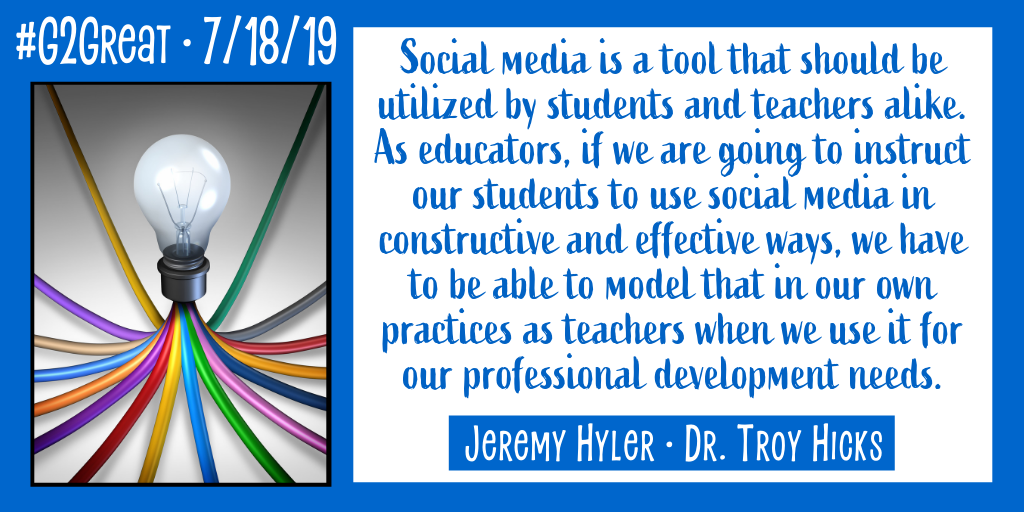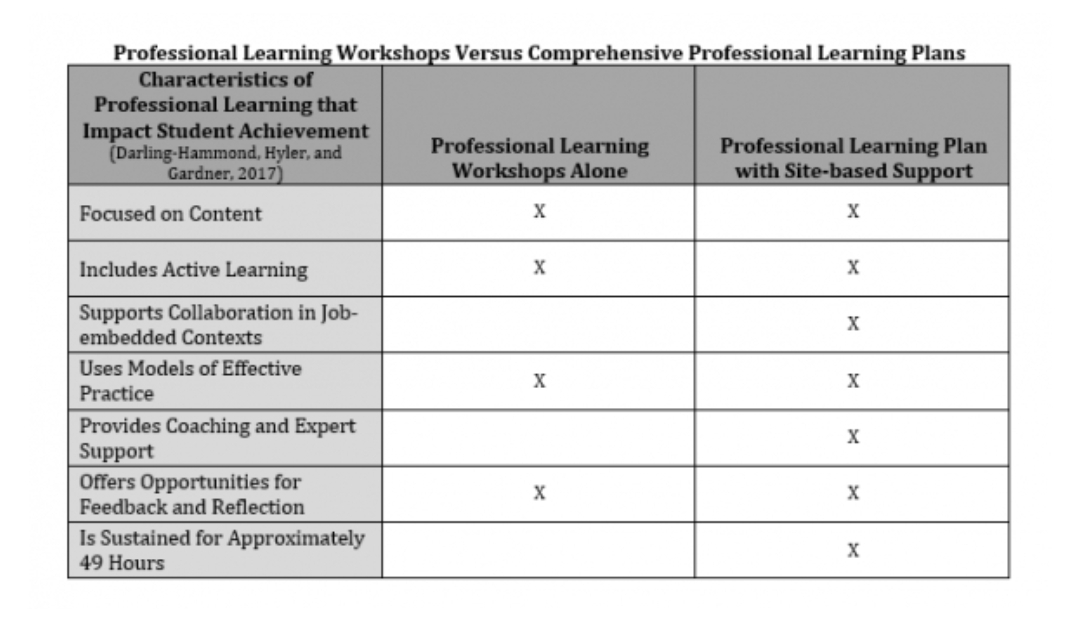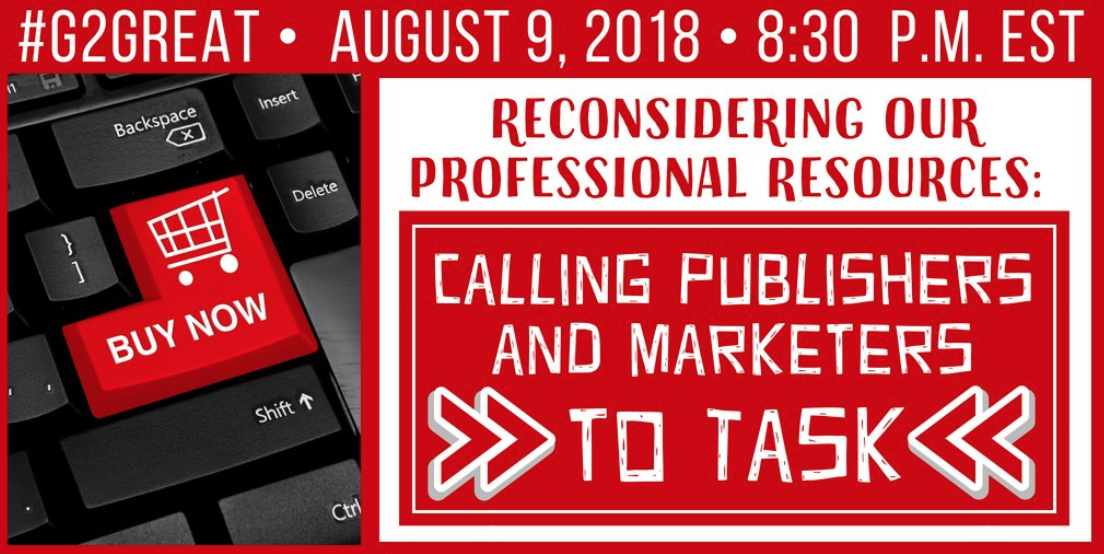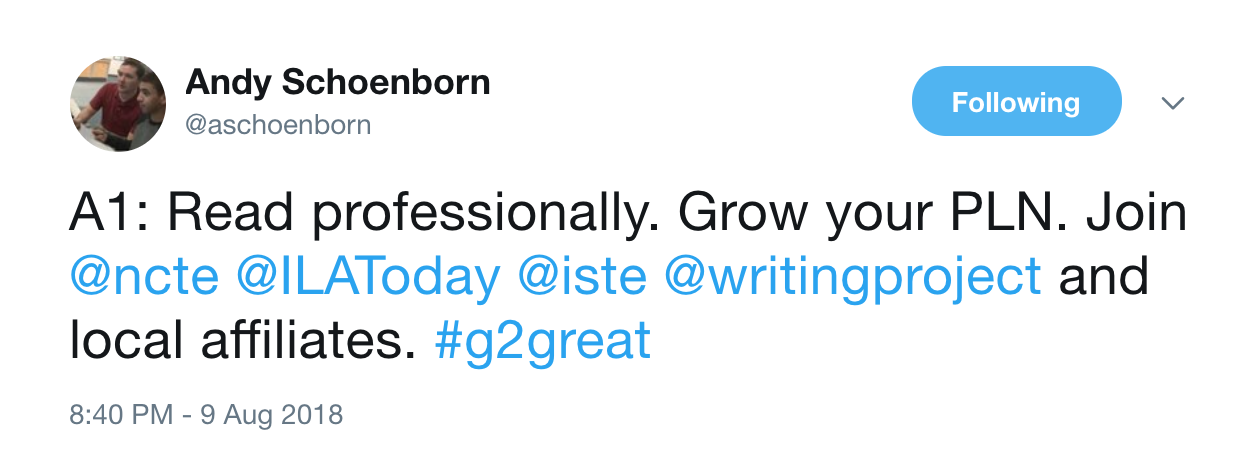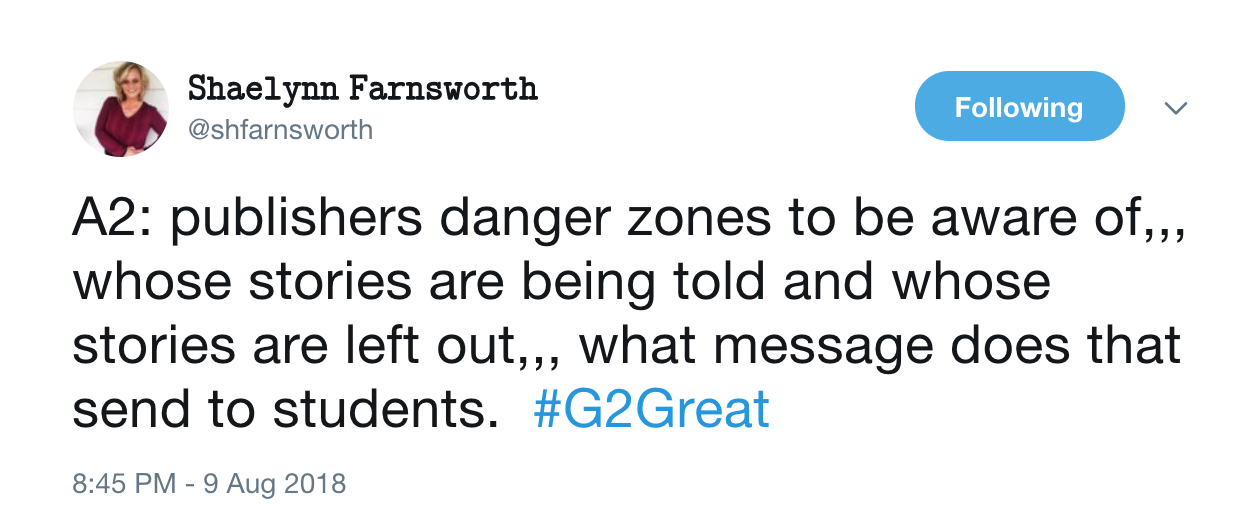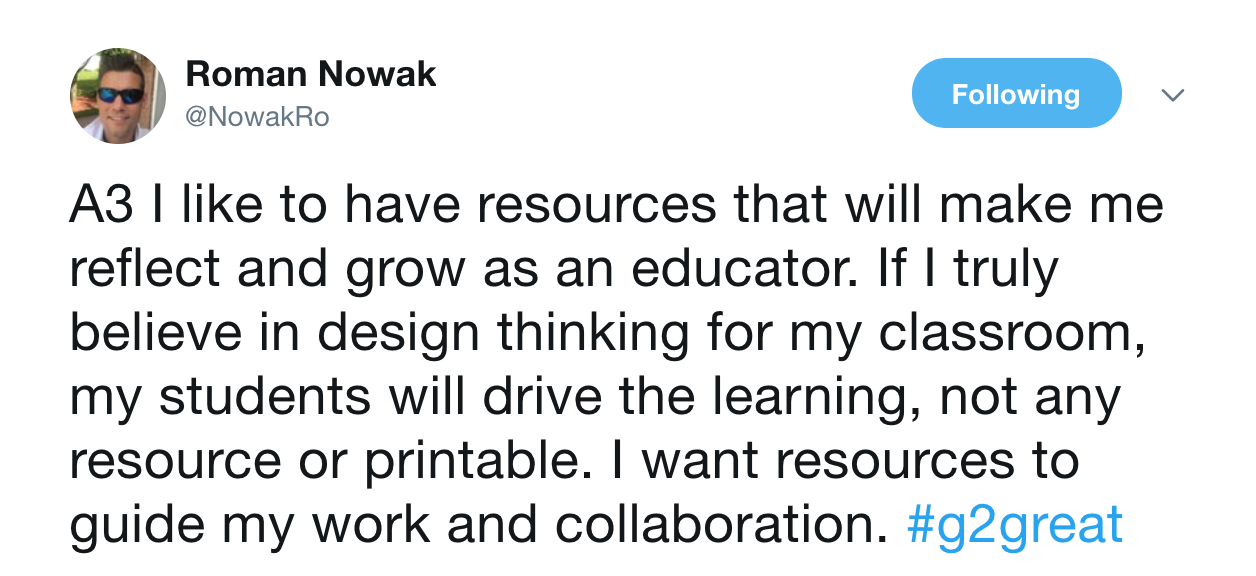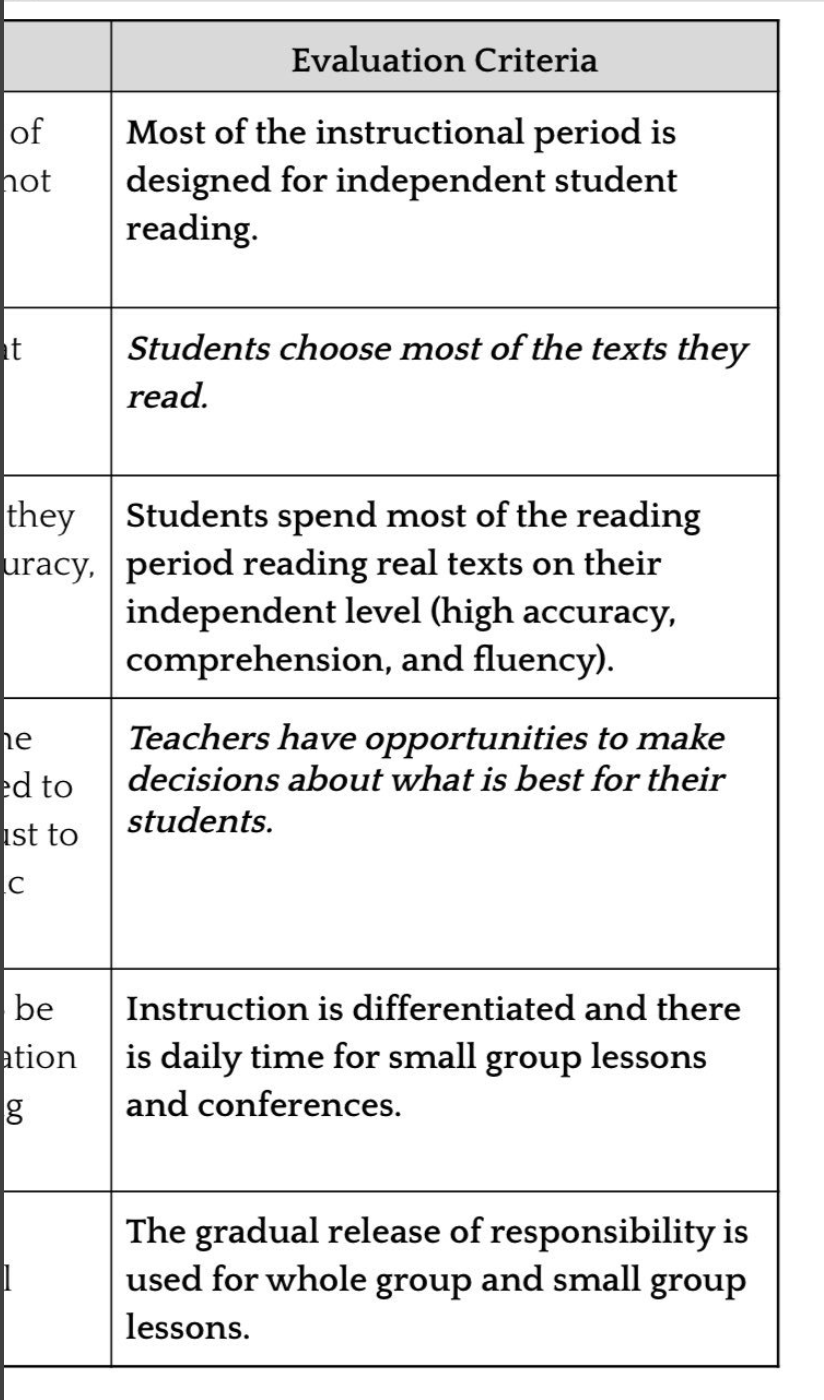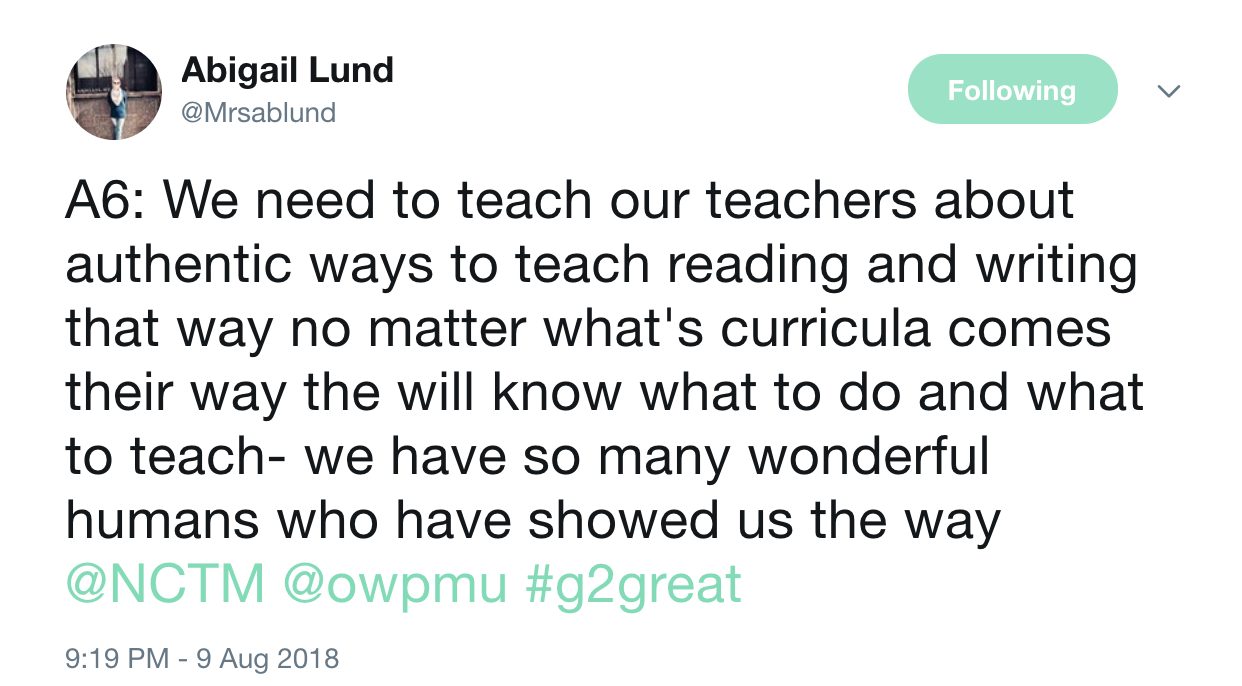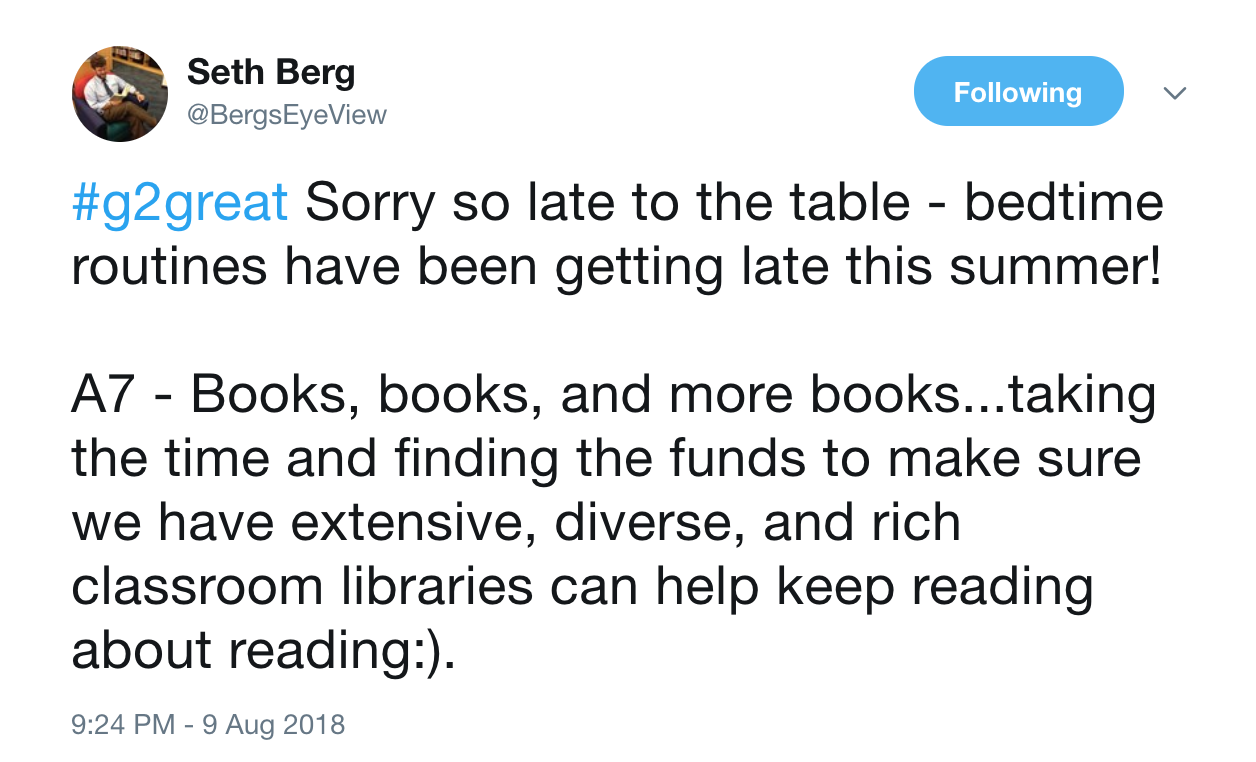Wakelet artifact consisting of all #G2Great tweets here.
By Fran McVeigh
The three authors of Five to Thrive: Answers to Your Biggest Questions about Teaching Middle and High School ELA who joined #G2Great on Thursday, October 6th are noted for their ELA knowledge. Matthew Johnson had not previously been here as an author, but his collaborators Matthew R. Kay Not Light, But FIRE: How to Lead Meaningful Race Conversations in the Classroom, and Dave Stuart Jr. these 6 things: How to Focus Your Teaching on What Matters Most are familiar to many #G2Great followers. If they aren’t typically on your ELA radar, you need to elevate them now!
Also, note that two additional titles in this Corwin Press “Five to Thrive” series were represented on #G2Great previously. Christina Nosek with Answers to Your Biggest Questions about Teaching Elementary Reading and Melanie Meehan’s Answers to Your Biggest Questions about Teaching Elementary Writing. All of the titles are worthy of your attention!
Because this was part of the series, I am beginning with the authors’ responses to the questions which explain my interest in this book for the #G2Great chat.
| What motivated you to write this book? What impact did you hope that it would have in the professional world? |
The last couple years have been really rough for educators. This has led to a large number of new teachers entering the profession due to retirements and led to many teachers feeling exhausted, overextended, and burnt out. We wanted to write this book–which is about what works in the classes of three teachers in three very different locations (rural, suburban, and urban), and schools (small, medium, and large)–to help both those new teachers and those seeking to be new to focus on the areas that matter the most and can help them towards better, more equitable, and more sustainable teaching .
Email 9/28/2022
| What are your BIG takeaways from your book that you hope teachers will embrace in their teaching practices? |
Arguably the biggest takeaway is that community is not a second-tier concern to be focused on once the real work is done. The pandemic helped to show us that building strong and positive classroom communities is essential work that we need to thoughtfully and purposefully engage in daily. Other themes that bubbled up were the importance of constantly listening to and consulting the students in an effort to build a true partnership, the importance of finding community as educators to keep our own lights burning bright, and the importance of revisiting and reflecting on important ideas/skills/topics again and again and again while designing instruction.
Email 9/28/2022
| What is a message from the heart you would like for every teacher to keep in mind? |
Few resources are as precious as teacher time or student voices. We need to treat each with the respect that they deserve!
Email 9/28/2022
Key points deal with respect for teachers and the:
Value of community
Value of teacher time
Value of student voices
These key points are exemplified in the quotes and the responses in the chat. (The slides from the chat that include pretweets or quotes during the chat are in gray boxes separate from actual tweets that remain white like Dave Stuart’s below as I play with different format options in this post.)
Value of Community
“What we’re after is the active construction of class cultures that are courageous, curious, and collaborative; social places where students listen to each other, finding themselves both pushed and secure, challenged and inspired. We want a classroom where students measure their strengths and successes based on their own growth.”
“…it is important to acknowledge that we should consider community building as the work of our curriculum choices and pedagogical moves throughout the entire school year.True community is not built with a couple of initial exercises. (p. 6
Value of Teacher Time
“We authors still believe that teaching is the best job in the world, but we get it when we hear yet another colleague say, I can’t keep doing this.” “On default settings, the secondary ELA teacher’s job isn’t sustainable.” (p. 116)
“What makes feedback effective isn’t how many words the teacher writes in the margins. What makes feedback effective is how much the student reads, understands, and ultimately learns from it.” (p 61)
What do we know now?
Value of Student Voices
“Listening authentically is effortful, after all. It takes significant bandwidth for students – and, frankly, their teachers – to tune out distractions and lock in on any speaker’s ideas for even the shortest amount of time.” (p. 13)
And then what? So what?
Perhaps you think this book is designed for beginning teachers. Perhaps you think it might fit into a secondary ELA methods course. Perhaps you think that a MS/HS ELA team could study this book together to build a more “common sense” approach to building a collaborative team. Perhaps an ELA teacher would hand it off to his/her administrator. Perhaps an administrator would hand this book off to a teacher new to the building. All of these are possibilities.
If you embrace the idea of teacher stewardship in the classroom, you might consider these actions.
Volunteer to be a mentor.
Check in with a new teacher – new to your content, department, building, or district.
Pass this book on to an administrator who does not have an ELA teaching background.
Follow the authors on twitter, social media, or their blogs!
Study your classroom for its safety in sharing, connecting, listening and learning from each other. How will you nurture community for students and teachers? How will you nurture and protect time? How will you nurture your own continuous learning and reflection?









